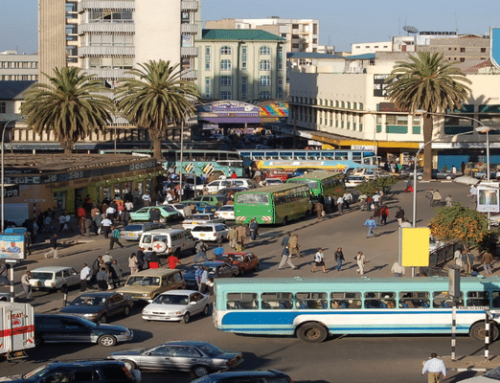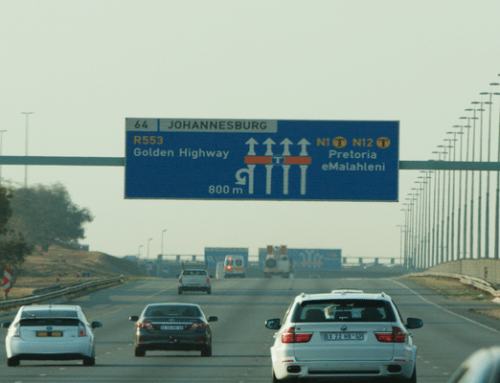Ridesharing has become a popular method of travel in many cities across the world. Its affordability and convenience make it an attractive option for many travellers. Unfortunately, ridesharing does have a risk to it. For all intents and purposes, you are still getting into a vehicle with a stranger. Recent incidents of inappropriate behaviour have raised concerns whether it is a safe method of transport. Acknowledging that the risks exist will help you better understand your security. If you are concerned about your travel safety when using rideshare companies, the following tips will help to provide you options to improve your security awareness.
-
Sit in the back and diagonal from the driver
Always sit in the back seat if you’re travelling alone and sit diagonally from the driver. This creates an extra layer of security between you and the driver. When in transit, sitting in the diagonal position affords you a better view of the driver e.g. are they texting someone? Do they have anything hidden in their lap? etc. In the diagonal position you can monitor their movements and maintain situational awareness.
Further, if an incident does occur and the driver stops and tries to control you, it is now easier to exit on the opposite side of the car from them and use the car as a barrier, while deciding whether to run, shout for help, or defend. There have also been incidents where drivers have pinned a person sat behind them by pushing their seat back and preventing their escape.
-
Know how to use the locks
Familiarizing yourself with the locks and handles when you board a vehicle will allow you to respond proactively if an incident occurs. For example, if your vehicle is involved in a Road Traffic Collision (RTC), removing yourself from the threat quickly will reduce your risk of any further injuries. It also improves your chances of escaping from the vehicle if you feel there is a threat to your personal safety.
Getting into the habit of travelling with your doors locked and the windows shut will prevent you from becoming an easy target for thieves. If you’ve not secured your doors, thieves can gain access when your vehicle becomes stationary i.e. at traffic lights or a junction. Remain alert at all times, watch your driver and increase situational awareness especially if travelling alone.
-
Call a friend or relative
When you board your vehicle try to phone a colleague, friend or family member to give them details of your journey. Ensure they know your driver’s name and the route you will be travelling, speak loud enough so the driver can hear your conversation. While your vehicle is transiting keep an eye on your route and ensure your driver sticks to the plan unless otherwise directed by you. However, don’t keep your eyes constantly on the map, pay attention to your surroundings and get a sense of the environment you are travelling through.
-
Wear a Seatbelt
It sounds so obvious, but the number of people who don’t bother in taxis, rideshares or buses would surprise you. Remember not to become complacent and always wear a seatbelt, even if there is no legal requirement. Road Traffic Collisions are the main cause of death for travellers worldwide. Regardless of what the country’s legal standards are, ensure you prioritise your safety. If you get in a vehicle that does not have one, and it is safe to wait for another vehicle, get out and find one that does.
Oh, and on the note of crashes and security, avoid any motorbike or Rickshaw type taxi services for the same reason. Yes, they can be a lot of fun, but when they go wrong, the results are always a lot more severe than if you were in a car, with a seatbelt on.
-
Remain Vigilant and Be Pro-Active
When using overland transportation listening to music and interacting on your phone helps to make the journey a little more pleasant, however, this reduces your awareness and can cause distractions. If you are travelling with a rideshare company and decide not to follow your route, you may not see the early warning signs. For example, no traffic on the main route but your driver turns down a side street, or maybe takes you a different direction insisting they know a faster route. If you’re not paying full attention you may miss the signs.
Remain alert to your driver’s behaviour and recognise if their mannerisms change during your transit, do they keep checking their phone, do they stop for longer than necessary when at a junction? The sooner you recognise something’s not right the more chance you have of reducing the threat.
You must prioritise your security and be prepared to make difficult decisions in challenging situations. Have 911 (or a local equivalent) ready in your phone and if you begin to feel your driver is acting in an unsafe manner i.e. excessive speeding, driving through traffic lights, refusing to stop or being distracted, don’t waste any time, call for help. In extreme cases of personal safety and your driver starts to act inappropriately, phone the emergency number immediately and use any means necessary to get out of the vehicle before making your way to a safe location.
Travel Security Training
If you are interested in learning more about improving your security while transiting abroad, please visit www.exploresecure.com.
Secure Transportation Services
ETS Risk Management provides global secure ground transportation and Executive Protection using highly trusted and experienced local resources, all of which exceed the standard for business travel requirement. Our adaptability and resilience allow us to operate anywhere in the world, including the most challenging environments. Maintaining a professional and robust service to ensure the safety of all travellers is our top priority.






